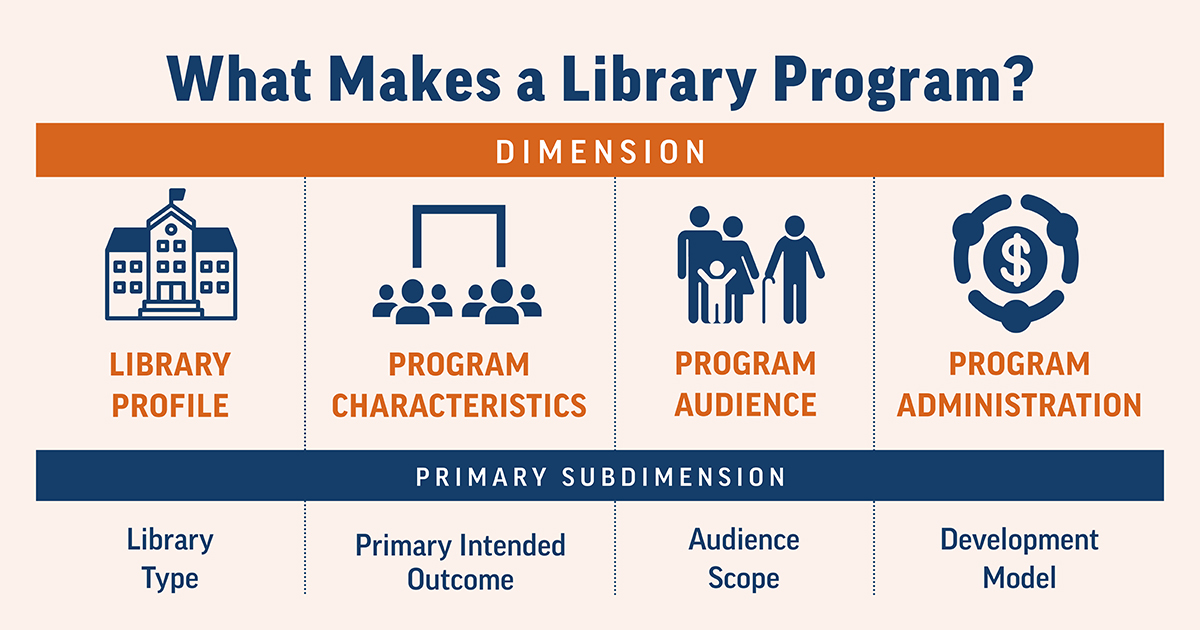A New Framework for Library Public Programs
A national study of library programming generates a new way to understand and advance a key service to communities.
Libraries provide a range of critical services to their communities. One key service is public programming, which libraries have long offered to their constituents. Even though library professionals in the United States have created and implemented public programs for decades, there was not yet a research framework for studying and comparing these programs in 2018 when we began our study. Our recent research, published in Public Library Quarterly, provides the first categorization of different areas of library programming across the United States.
The categorization developed through this project lays the foundation for long-term study of the impact of library public programming. This study benefited from a level of consensus not previously achieved at this scale. We accomplished this by including opinions and experiences from library expert panels as well as seeking broad, representative input from across the library field.
We surveyed over 700 librarians, with questions regarding library profile (e.g. public, research, K-12, tribal, etc.), program characteristics, audience characteristics, and program administration—each with various subdimensions. Together, this information helped us answer the question: what are important similarities and differences among library programs? Knowing this can further research regarding who is involved in programs, the potential outcomes for those individuals, and the institutional impact of library public programs.
Key Findings
An important step in developing consensus about types of library programs was to first create working definitions of both “public” and “programs.” Here are the definitions that we developed with library professionals:
- A program is a proactive, intentional service in a social setting developed to meet the needs of an anticipated target audience.
- All libraries, regardless of type, have a public. Public and public program refer to the library’s public— the people the library serves or the audiences the library targets for its programs.
For example, in the case of academic libraries, their public may include the student body, the chemistry department, or incoming freshmen. For public libraries, public may mean the whole community or, perhaps, a subset like youth or seniors. For a program to be public, it need not be open to all people. However, we do not consider programming public if attendance is required in some way, for some audience. As a result, this definition naturally excludes instruction when it forms part of K–12 or academic coursework.
Program Categorization: Key Components
We focused on four components that make up public programs. Together, these components shape the type of public program a library develops.
- Knowing the type of library provides a window into who its programs are most likely to affect. “Public” means something very different depending on the type of library (e.g., public, K–12, academic, tribal, special) in question.
- Prioritizing intended outcomes (e.g. emotional outcomes, recreation outcomes, dialogic outcomes) over program topic has two main benefits: it brings attention to the value that accrues for individuals and communities as a direct result of library programs, and it supports library professionals in more deliberate program development.
- Understanding audience scope—whether a program seeks to attract some subset of the library’s public or its entire public—provides additional information about who may be most affected. Characterizing programs in this way can help explain the relationship of library services to population data, and support monitoring of inclusion strategies.
- Finally, program administration, and program development models, includes program origin and execution. In this dimension, the critical question is: What does the program development model look like? Categorizing programs by how they came to be can shed light on a different type of impact, specifically impact on the library as an institution rather than on individual patrons.
The Framework: Programming Types
Ultimately, our study produced this framework for understanding types of library public programs. A full framework can be downloaded from the Full Document button above.

Let’s Put It to Work
For library professionals - this work can help plan effective programming that focuses on one or more intended outcomes, and identifies a clear audience the program is intended for. The framework will also enable library professionals to identify and respond to a genuine community need rather than planning “cookie-cutter programs,” as well as encouraging them to think about intended program outcomes earlier in the planning process. The ability to better categorize library programs, including their intended audience, can also lead to clearer opportunities for measuring program impact.
With more than 115,000 libraries serving various communities in the United States, library public programming has the potential to directly affect abundant audiences. By considering these ways of classifying library programs, we believe it will be possible to develop a much more detailed understanding of the effects of these experiences and make adjustments that best serve the needs of the population as a whole.
About the Project
This research is part of the National Impact of Library Public Programs Assessment (NILPPA), an initiative of the American Library Association designed to understand and document the characteristics, audiences, outcomes, and value of US library public programming. Read more about the NILPPA research here. The library public programming framework study was funded by the Institute of Museum and Library Services (grant #LG-96-17-0048-17).
Photo by Sigmund on Unsplash